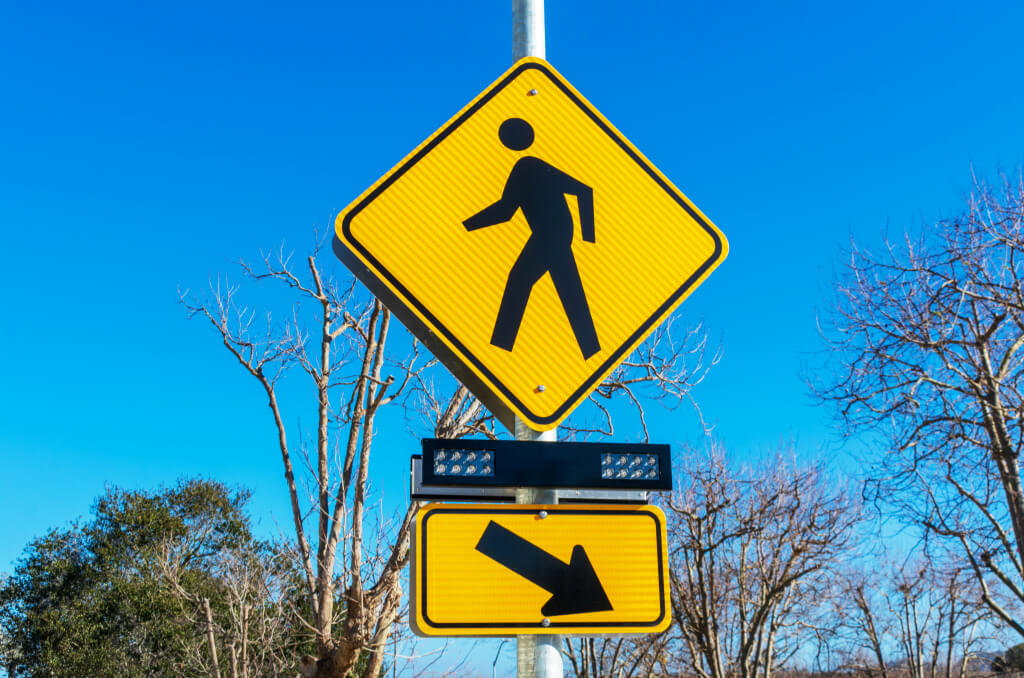As road systems evolve and change, so must the standards and rules that govern them. The Manual on Uniform Traffic Control Devices (MUTCD), the authoritative guide for traffic control devices in the United States, has made significant revisions that took effect on January 18, 2024.
Some of these revisions, designed to replace the outdated standards outlined in the 2009 edition, address contemporary challenges and embrace innovations to enhance road safety, efficiency, and overall traffic management. To help address these challenges, the public was allowed to comment on the draft version published in 2021.
The Federal Highway Administration (FHWA) made many notable updates to the new edition. Let’s review some of the most significant and latest changes.
Prioritizing Safety for All Road Users

Safety is always a top-of-mind priority on the road, and the 2024 MUTCD updates put emphasis on the needs of vulnerable road users. The FHWA made several revisions and additions to the MUTCD 11th edition to address the needs of cyclists and pedestrians, especially those with disabilities. Some of these changes include:
- Redesigned crosswalk signs
- Updated regulatory signs to include bicycle lanes
- Pedestrian-friendly infrastructure aimed to create safer environments for pedestrians and cyclists
Addressing the Rise of Multi-Modal Transportation
In response to the changing landscape of urban mobility, the 2024 MUTCD updates address the growing popularity of non-traditional transportation. As more individuals turn to bicycles, scooters, and public transit, the guidelines provide crucial insights into integrating these modes effectively and safely.
By promoting a cohesive approach that accommodates various ways people move about, the 11th edition MUTCD reflects a commitment to sustainable and inclusive transportation solutions.
Many regulatory signs have been added or updated to include vehicles other than cars. Here are a few examples of the vehicles that these signs provide guidance for:
- Bicycles
- Electric bikes
- Scooters
- All-terrain vehicles
One of the most notable changes introduced in this new edition is the emphasis on expanding pedestrian and bicyclist safety. With an increasing focus on creating more pedestrian-friendly environments, the revised guidelines include:
- Updated crosswalk designs
- Pedestrian signalization
- Improved signage to ensure a safer interaction between pedestrians and vehicles
- Updated speed limit signs and turning signs incorporate the bicycle symbol for enhanced roadway safety for cyclists
Managing Speed Safety, Turns and Parking

Speed, turning, and parking regulations are all important aspects of roadway safety. The new MUTCD edition has expanded, improved, and added many new guidelines in these areas. Here are a few examples:
- New speed limit signs for specific vehicles and vehicles of certain sizes, such as end speed limit signs for trucks and variable speed limit signs
- New turn signs that specify what type of vehicle should not be turning in designated areas
- New electric vehicle (EV) signage to support the increasing number of EV drivers
Embracing Technology
Another standout update is the adoption of more modern technology to enhance safety for all road users. Here are a few examples:
- New guidance using ITS technology, such as traffic sensors and intelligent traffic signals
- New requirements regarding the use of solar-powered traffic signals
- New recommendations for activated in-pavement devices at rectangular rapid flashing beacons (RRFBs), pedestrian-activated flashing beacons, and in-roadway warning lights
Timeline
State agencies will have up to two years to adopt the MUTCD and an additional three years to program, fund, and install any devices necessary. Updated to the newly revised MUTCD guidelines can be expected every four years moving forward.
The release and implementation of the new MUTCD guidelines represent a significant milestone in the evolution of traffic control standards. These updated guidelines, emphasizing enhancing safety, efficiency, and accessibility in transportation systems, reflect the continuous efforts to adapt to the evolving needs of traffic management. These new standards provide a comprehensive framework for creating more inclusive, user-friendly, and responsive roadways.
Note: many of the new sign legends have not been finalized by the FHWA and are not for sale on our website yet. They will be available for purchase once the FHWA has completed the designs.

